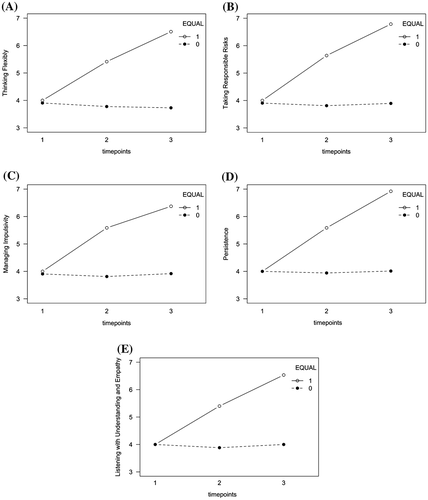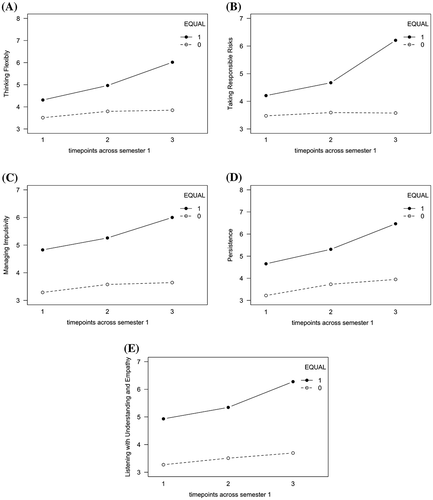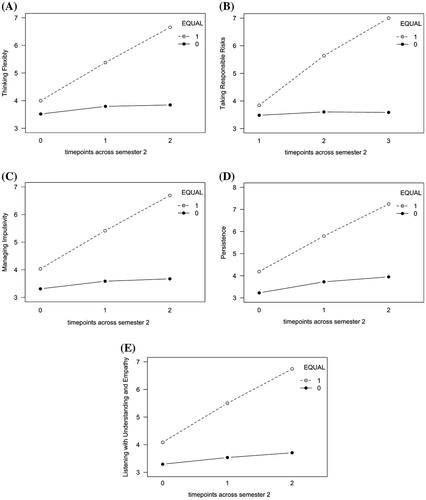Figures & data
Table 1. Statistical values showing an EQUAL intervention-by-time interaction in at-risk youths in (A) 2013 semester 2, and a similar interaction effect in an independent cross-over cohort in (B) 2014 semester 1, and (C) 2014 semester 2
Figure 1. Equine therapy improves Habit of Mind scores over time in one semester in 2013. The teacher ratings for the Habits of Mind constructs: (A) Thinking Flexibly, (B) Taking Responsible Risks, (C) Managing Impulsivity, (D) Persistence, and (E) Listening with Understanding and Empathy, for students of the 2013 cohort who were in the EQUAL program compared with students who did not partake in the program, showed an increase over the semester

Figure 2. Equine therapy improves Habit of Mind scores over time in 2014 semester 1. Higher baseline measures were found in the students about to enroll in the EQUAL program in semester 1 of year 2014 for the following four Habits of Mind constructs: (A) Thinking Flexibly, (B) Taking Responsible Risks, (C) Managing Impulsivity, (D) Persistence, but not (E) Listening with Understanding and Empathy. The teacher ratings for four Habits of Mind constructs (A) Thinking Flexibly, (B) Taking Responsible Risks, (D) Persistence, and (E) Listening with Understanding and Empathy, for those students in the EQUAL program, compared with students not in the program, showed an increase over the semester

Figure 3. Equine therapy improves Habit of Mind scores over time in two semesters in 2014. Higher baseline measures were found in the waitlisted students about to enroll in the EQUAL program in semester 2 of year 2014 for the following three Habits of Mind constructs: (C) Managing Impulsivity, (D) Persistence, and (E) Listening with Understanding and Empathy. The teacher ratings across five Habits of Mind: (A) Thinking Flexibly, (B) Taking Responsible Risks, (C) Managing Impulsivity, (D) Persistence, and (E) Listening with Understanding and Empathy, for those students in the EQUAL program, compared with students not in the program, showed an increase over the semester

